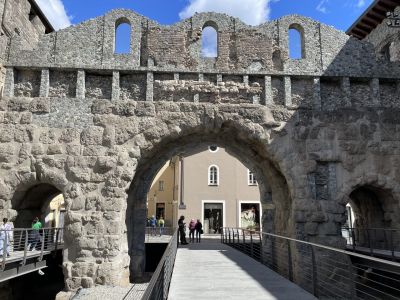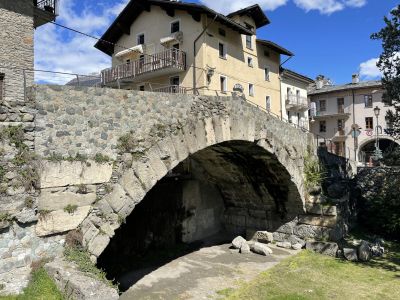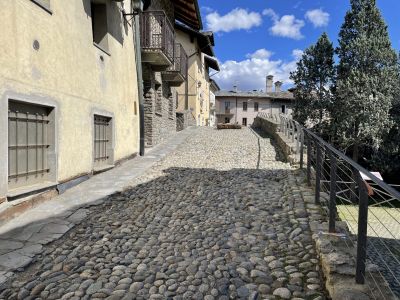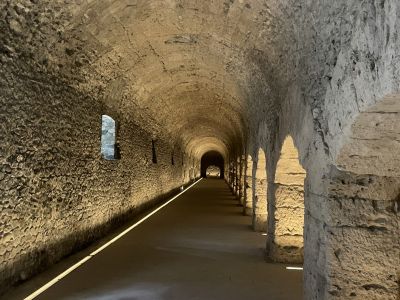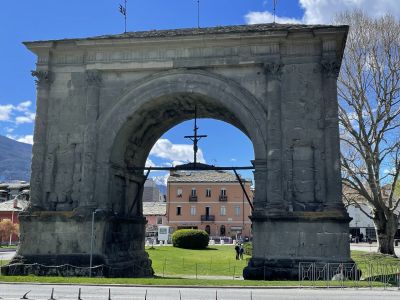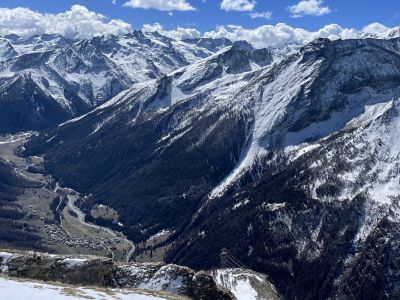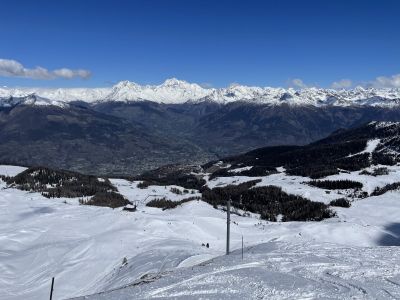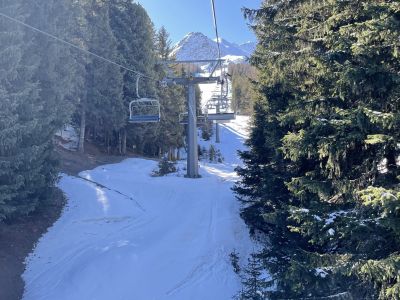03/04/23
Another Aosta valley new experience beckoned. We have never actually visited Aosta itself, which seems like a major omission in our frequent visits to the eponymous valley.
Aosta Town
The sosta in Aosta (how poetical!) had some pretty poor reviews but we thought we’d chance it anyway. We spent the night before preparing ourselves for being off grid and potentially having no services. Having long hot showers, emptying waste and filling up with fresh water at Pre-Saint-Didier as well as charging all of our devices and our toothbrushes.
In the end half of our preparations were unnecessary, the facilities had obviously been given a re-vamp and water and waste disposal were all functional. There isn’t any electricity though so charging things had been useful, especially our toothbrushes which cannot be charged on our 12 volt supply.
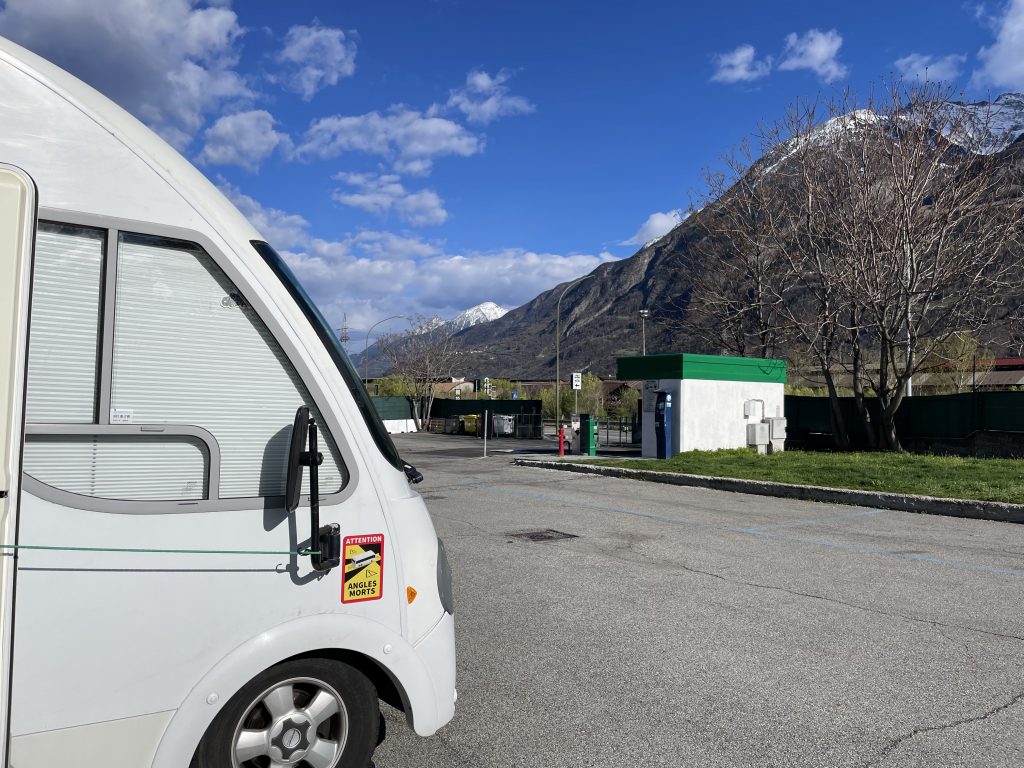
The Sosta in Aosta.
From the sosta we took the short walk into Aosta itself to see what the town had to offer. Our principal goal was to walk around the Roman sites in town. Then, as it was a sunny day, some gelato was in order and maybe some drinks ‘fuori’ (outside).
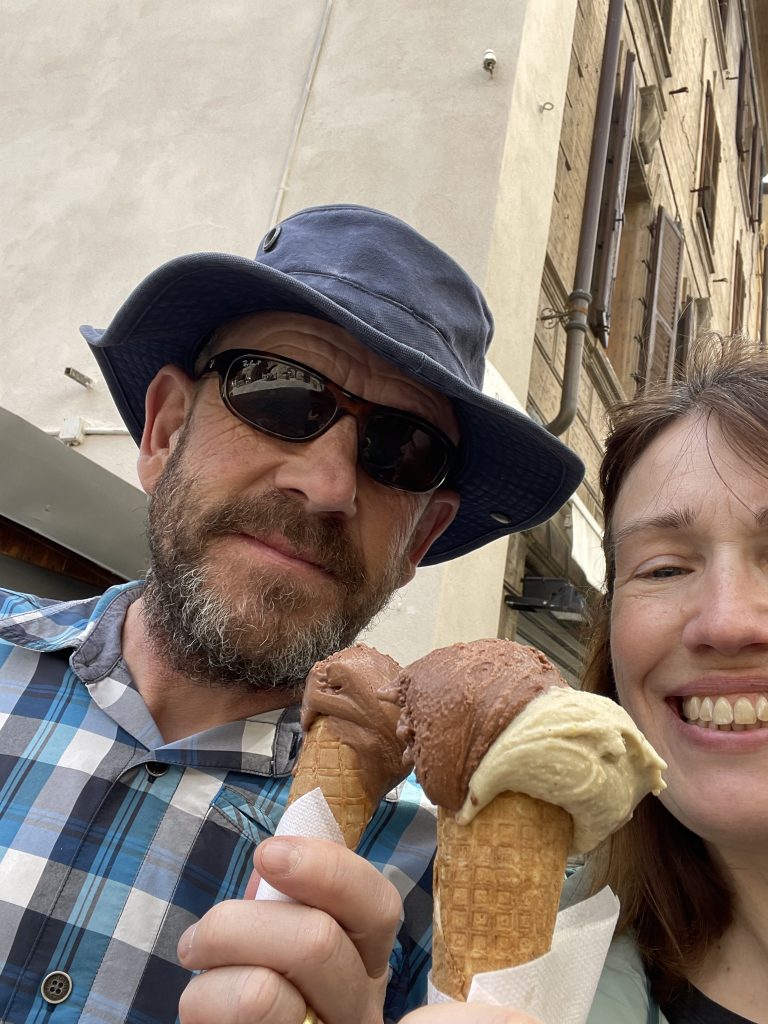
Gelato. Paul had already eaten most of his by the time I took this photo.
Aosta was established as a Roman town under Caesar Augustus after he defeated the local population. It was named Augusta Praetoria and was built pretty much from scratch to the standard grid pattern of a Roman town. Significant evidence of the original walls and street pattern remain today.
Aosta formed a significant strategic point on the ‘Road to Gaul’ with access to two important mountain passes converging on the town. The Piccolo San Bernardo and Gran San Bernardo passes are still important routes through the alps to this day. Modern road systems pretty much mirror the original routes, albeit with the Mont Blanc and San Bernard tunnels making the journey less hazardous in winter.
A very informative video in the Cryptoporticus shared this information with us. We were very lucky to arrive just as it switched to the English version and even Paul managed to stay awake. The Cryptoporticus was one of the paid exhibits, essentially the arched foundations of the walls of the temple area of the original town Forum. This and several other sites could be visited on one tourist pass. At 8 euros each it felt like a bargain.
The most photogenic of the Roman sites had to be the remains of the Roman Theatre. One wall still stands and the windows frame a view of the mountains behind, falcons (we werent sure if they were peregrins, sparrowhawks, or something else) were riding the thermals and occasionally coming to rest on the towers and walls. On this sunny day it was spectacular.
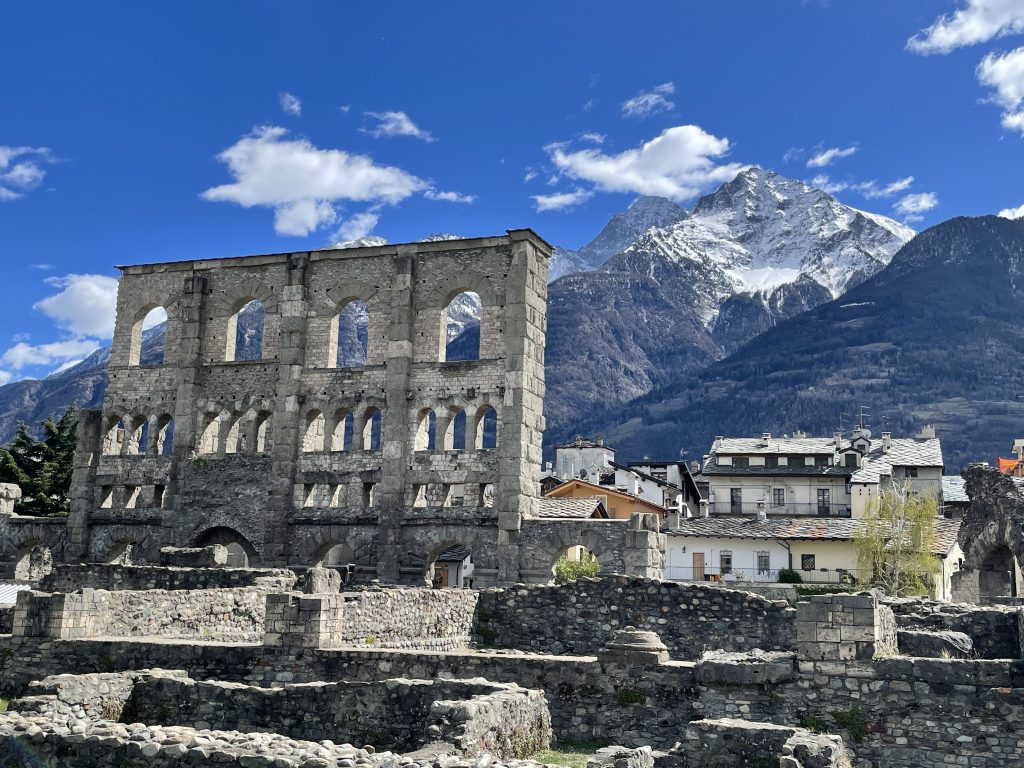
The Roman Theatre
There is definitely more for us to go back and see in a future visit. The town itself is compact and tourist oriented with plenty of places to shop and eat. I cant believe we hadn’t been here before. One hundred percent recommended.
How to say Aosta?
One thing we discovered, while interacting with people in town, is that we have been saying Aosta wrong all this time. With our British accents we were pronouncing the A to rhyme with Bay but it should have been the long A of Bar.
The double vowel A-O combination is one that our tongues were finding it difficult to get right. We spent a few lift rides repeating the word back and forth trying, and failing, to perfect it. That’s the sort of exciting thing we get up to when we’ve got some time to kill.
Skiing in Pila
Aosta town has it’s own ski resort. It’s quickly become one of our favourites on this trip. The proximity of a bustling town full of amenities makes it even better. All oft he Aosta valley ski resorts are supported by a common lift pass system so we could use the cards we’d acquired in La Thuile and top them up.
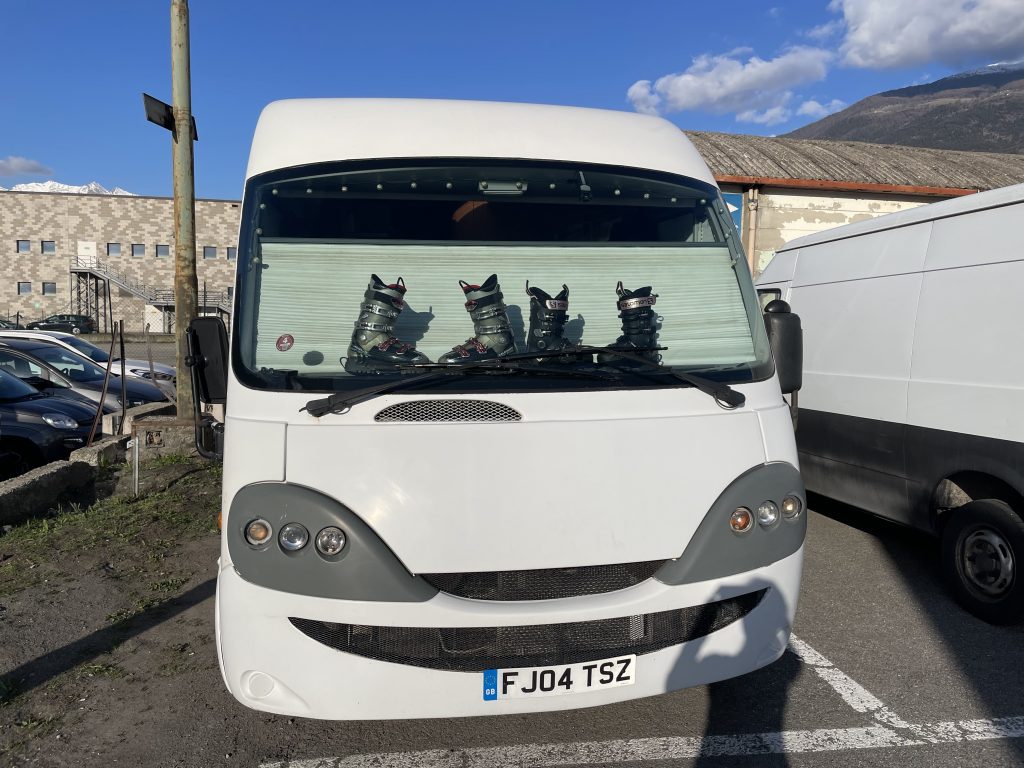
In the gondola car park warming our boots in the morning sun
The ski resort of Pila is high up amongst the mountains to the south of Aosta, but you can access it by a Gondola from the outskirts of town. It’s a bit of a trek from the Sosta carrying ski gear so we moved to the car park at the bottom of the Gondola where parking is free and overnighting is tolerated. There were a couple of other motorhomes parked up here including a British Knaus.
Paul had found the Aosta sosta a bit noisy and hoped for a quieter night’s sleep in this car park, but both locations had early morning noise and the background hum of city traffic. It didn’t bother me in the slightest but then Paul has always been a bit of a light sleeper.
From our location, tucked in the corner of the car park, we could wake up, sling our skiing gear on and take the huge 1222 meter ascent on the Gondola from the warm spring day in the valley to the cold snowy slopes of the ski resort. The car park itself filled up quickly each morning, but we couldn’t find all of those people up on the slopes. The ski area seemed almost empty and we’d often find ourselves the only people on a run. The Interski buses with their British school kids were in evidence again but we only seemed to bump into them in the restaurants.
The skiing itself was brilliant; all but one lift was operational and the condition of the slopes in the mornings varied from good condition snow at the top to hard bashed runs at the bottom. By the afternoon the lower slopes were getting quite sloppy, but the resort is planned well so you can stay up high particularly if you are happy with reds and blacks.

